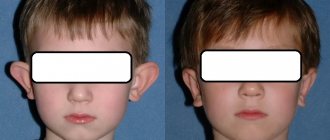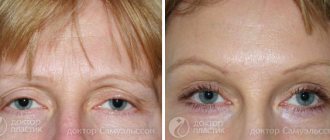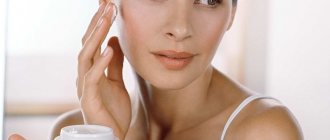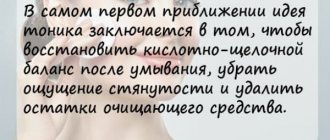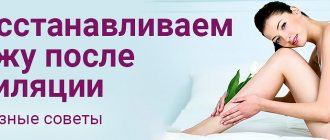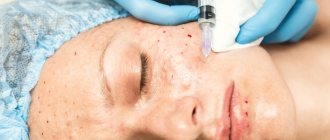Thread lifting is a highly effective modern method of rejuvenation. It is very popular due to the ease of implementation and the effectiveness of the results obtained. Many patients decide to take the step of having their face tightened with threads. However, in order for the outcome of the procedure to be pleasing, it is necessary to follow the rules of behavior and skin care for several weeks after the facelift.
The rehabilitation process takes about one and a half months on average. There are cases of earlier recovery and later. There are three periods of rehabilitation:
- Primary edema. Lasts three days. This is the reaction of the skin and underlying tissues to intervention after a circular lift. It is characterized by pronounced swelling of the tissues.
- Resorption of edema. Occurs within two weeks.
- Recovery period. Lasts about a month. At this time, the skin takes on its new appearance, becomes tightened and elastic. Recovery after thread lift surgery occurs gradually. It is necessary to carefully follow all the recommendations of doctors so that the lifting effect is formed and properly manifested.
How to care for your face after a thread lift
1-3 days after thread lifting. Home mode. Minimum physical and mental activity; it is recommended not to use facial expressions when communicating. It is best to be in a reclining position, silently read a book, draw, watch TV shows or videos without emotions. It is optimal to listen to the radio or your favorite audio recordings. You cannot touch your face, wash your face, or apply creams and ointments (except those prescribed by the doctor). You need to sleep on your back. Consume food and water warm. Food should be neutral in taste and soft in order to use a minimum of muscles when chewing it. It is better to drink water through a straw or from a sippy cup. Alcohol and smoking are strictly prohibited! Be sure not to remove the compression mask for the first three days!
4-7 days. If necessary, you can leave the house. Avoid hot food and drinks, exposure to the open sun, solarium, sauna. Do not touch your face with your hands, do not use cosmetics. Communicate without facial activity: do not laugh or smile. In the summer, be sure to wear a wide-brimmed hat or Panama hat when leaving the house. Sports, light fitness, jogging, morning exercises, any physical activity (including intimate) is prohibited. If the swelling has decreased significantly, you can wash your face using warm boiled water and a clean cotton pad using gentle, gentle blotting movements. At home, wear a compression mask and sleep in it.
8-14 days. You can eat your usual food at any temperature. Walking during periods of low solar activity returns to the daily routine. Sauna, beach and solarium, and other hot temperatures are not yet for you. Massage, cosmetics, intense physical activity, including facial expressions, are also prohibited. But you can wash your face more confidently with warm water using a cotton pad. In this case, a face that has recently been lifted should not be rubbed or squeezed. You can sleep not only on your back, but also on your side (but you shouldn’t sleep “with your head buried in the pillow” yet).
15-30 day . Return to normal daily routine. Expanding your social circle. Sleep in your favorite position, morning and evening washes. After washing, gently dry the skin by applying a soft, clean towel (preferably disposable) to it with blotting movements. It is allowed to go to work that does not require physical activity. There is no need to visit the sauna and solarium, play sports and fitness, or go on vacation to a hot country.
A month later, after the doctor’s approval, you can gradually return to your normal lifestyle.
Characteristics of threads
COG
Korean made threads.
They have notches directed in one direction. During the procedure, cosmetologists insert them using needles and then tighten the tissue for the desired fixation. The threads consist of biodegradable fiber, which dissolves in 1-1.5 years. In place of the threads, a frame of the resulting fibrous tissue remains.
Aptos
These threads have the same principle of operation, but they come in two types: non-absorbable and biodegradable.
What not to do after installing threads
After thread lifting, there are several strict restrictions:
- High temperatures: both external - when visiting a sauna or steam bath, solarium, beach recreation areas, and local: taking a hot shower or bath, eating, drinking. This increases swelling and prevents rapid skin recovery.
- Contact of facial skin with any objects and surfaces , including your own fingers and cosmetics. There is a high risk of skin contamination and infection.
- Washing with water irritates the skin, making swelling worse. With sudden movements and rough wiping, there is a high risk of tissue displacement and asymmetry.
- Active facial expressions, massage . You cannot sit with your chin or cheek on your hand. Any mechanical impact easily provokes displacement of the threads, causing asymmetry, which is extremely undesirable after a facelift.
- Sleeping on your stomach (and in the first days on your side) leads to increased swelling and can contribute to skin infection and displacement of the facelift threads.
- Singing lessons and visits to the dentist will have to be postponed: prolonged tension of the facial muscles can cause the threads to shift.
- Swimming, sports and fitness , intense physical activity are prohibited for a long period - they negatively affect the skin restoration process and provoke asymmetry of facial muscles.
Threads in cosmetology: patient reviews
As in any field of cosmetology, one of the decisive factors in a patient’s choice of a clinic and a doctor is reviews. “Threads in cosmetology” is no exception here, so let’s speak to those who have already made their choice in favor of thread lifting.
“I visited the Total Charm clinic for the first time in 2022 and was made an appointment with E.G. Azizyan. Performed a thread lift procedure. Since then I only turn to him. E.G. a true professional in his field, attentive and neat. I believe that the most important thing in a relationship with a doctor is the patient’s trust in him. The doctor has a surprisingly light hand. The procedure is quick and painless, which is important.”
(Bogomolova Angelina Aleksandrovna, doctor Azizyan Eric Grigorievich)
“I really love this clinic. Responsive and attentive staff. Many thanks to Dr. Azizyan Erik Grigorievich for transforming my face. From consultation to procedure, everything is at the highest level.
Thank you!!!"
(Natalia Petrovna Polityko, doctor Eric Grigorievich Azizyan)
“I was very pleased with the Total Charm clinic on Chistoprudny Boulevard, everyone is very attentive and courteous. I really liked the cosmetologist Ilona Valerievna, she treated my wishes with understanding, in the end everything turned out great, I’m happy with the result. I will definitely come to Ilona Valerievna again"
(Rodina Svetlana Aleksandrovna, doctor Toriya Ilona Valerievna)
Side effects after face lift with threads
Not everyone experiences side effects after facelift surgery and go away fairly quickly. But it’s better to be aware of possible troubles and think through an action plan in advance.
Violation of facial expressions is the result of anesthesia during the insertion of threads. As a rule, it goes away after two to three hours. Some note disturbances in facial expressions lasting 3-4 days until the swelling caused by the facelift completely subsides, because the swelling itself also makes it difficult to actively move the facial muscles.
Minor effects of unevenness on the skin at the puncture site and along the placement of the threads made. The body tissues get used to the new location after facelift threads are introduced into them. By the end of the second week, they usually smooth out without any intervention.
Hypercorrection - a feeling of “tightness” of the face can also be a consequence of tissue swelling in the first days after lifting. With the disappearance of edema, the “unnatural” appearance of the face disappears.
Bruises and small bruises are the result of damage to small blood vessels after a circular facelift, which inevitably happens even with very careful punctures of the skin. Within a few days they resolve on their own, and then disappear without a trace.
Cost of thread lifting with Kogi threads
The price of the procedure is determined individually depending on the severity of the problem and the expected effect. The cost of one Kogi thread is 2200 rubles. Accordingly, if five threads are required to achieve the result, the price will be 11,000 rubles. The cosmetologist will be able to tell the exact price of the service only after consultation and examination of the patient.
Prices for threadplasty
| NEEDLE 2G (2 strands) mental area | 36,000 rub. | ||||
| NEEDLE 2G (2 threads) middle zone | 36,000 rub. | ||||
| SPRING (4 threads) wrinkles of sadness | RUB 21,500 | ||||
| THREAD 2G (2 threads) eyebrows | 35,000 rub. | ||||
| THREAD 2G (2 threads) mental area | 35,000 rub. | ||||
| THREAD 2G (2 threads) middle face area | 35,000 rub. | ||||
| VISAGE 10 threads 2 zones | 38,000 rub. | ||||
| Mesothread thread lifting | 1,200 rub. | ||||
| KOGI threads (1 piece) | 2,200 rub. | ||||
| KOGI threads (5 pcs) | 11,000 rub. | ||||
Complications after lifting
By the end of the second week, no skin lesions should remain. All side effects should also disappear. A little swelling is allowed, but most often the result of successful lifting is already clearly visible. A face strengthened with threads looks much younger: you can carefully take a photo and compare “before and after.” Rarely do situations arise that require doctor intervention:
- Bruising and severe swelling that persist for more than ten days. Primary rehabilitation after threads is over by this time, there should be no bruising or swelling. If they still exist, you need to visit the doctor and find out the reason.
- Allergy to material. Face threads are made from modern hypoallergenic materials. But a hypersensitivity reaction may also occur to them, albeit extremely rarely with thread lifting. Unfortunately, in this case you have to part with the threads.
- Infection. The skin becomes red and hot to the touch. Severe pain appears and the temperature rises. A course of antibiotics often helps, and threads have to be removed less often and complex therapy performed.
- A persistent violation of facial expressions indicates injury or even compression of nerve fibers. The doctor conducts an examination and removes the face lift thread that is in contact with the nerve and impeding muscle movement.
- Lumps on the face and indentations on the skin. They are usually located at the points of needle insertion and removal. Most often, the threads for a facelift are displaced due to non-compliance with the rules of behavior in the early rehabilitation period (the first two weeks). It is necessary to consult a doctor, who in most cases can cope with the bumps using a non-surgical method.
Contraindications to the procedure
Kogi threads are biocompatible and do not cause irritation, but in order to exclude individual intolerance, it is important to conduct a full initial examination. During the consultation, the specialist explains in detail what the threads are, how they are installed in the skin, what sensations the patient may have when installing the threads and after the procedure. Also, the cosmetologist is obliged to tell in what cases mesothreads are used for the face and what the consequences of their installation may be if the recommendations are not followed. Also at the initial consultation, possible contraindications are assessed:
- The presence of tumors, both malignant and benign
- Severe hypertension
- Autoimmune disorders
- Chronic pathologies of the heart and blood vessels in the acute stage
- Connective tissue pathologies, tendency to form keloid scars
In addition, there are recommendations that should also be followed. Women are not advised to carry out the procedure during pregnancy, as well as before the end of lactation. Be sure to tell your doctor about all allergic reactions, especially to medications. Only after this will the doctor be able to assess the feasibility of using mesothreads and calculate their number.
At what age should threads be used?
This is perhaps the most frequently asked question.
From the point of view of the law - from 18 years of age. And from an aesthetics point of view, the first indications for thread lifting most often appear around the age of 30: wrinkles deepen, the oval of the face “floats”, and the skin loses firmness and elasticity. However, these processes are strictly individual for each person, and the time for correction can come either at 25 or 40 years.
The concept that thread lifting is indicated only when the face loses its youthful oval and the hated jowls begin to bother everyone, the nasolabial and labio-mental folds are deeply formed, and the face becomes “square” is long outdated.
You need to understand that thread lifting is not plastic surgery, we do not cut off the skin, but only move the tissue, due to which the skin contracts and activates histological lifting.
It takes time to start all these processes.
In this regard, the result should be assessed no earlier than six months later, or better yet, a year later.
Therefore, if you are over 50 and finally decided that it’s time to get threads, and that after that you will look 30, then you are too late. We will not say that there will be no result, it will be, but not what you expect.
In threadlifting, as in many other procedures, there is such a thing as the quality of the source material. The better it is, the more pronounced the result.
Therefore, as soon as the first signs of gravitational ptosis appear or do not appear at all, but you are already over 25, it is time to think about placing threads. This is how you will prolong your youth for many years.
Why is there no effect?
More than once in my practice I have heard that inserting threads has no effect. This has no effect, and simply in pursuit of making the procedure cheaper, some doctors use threads from the “just to deliver” category. And unfortunately, in most cases, it is you, our dear patients, who provoke them to this, wanting to do the procedure for “pennies”
Important!
The thread lifting procedure, especially with true lifting threads Dermafil Happy Lift, Aptos, etc., will not be cheap. Therefore, you need to understand for yourself - either I put threads or I don’t.
Let's summarize the results of incorrect use of threads, which will not have a lifting effect:
- Using reinforcing threads to achieve lifting
- Using an insufficient number of threads for lifting purposes. It is especially touching when they place one or two threads on each side. And in the best case, it’s good that these will be so-called kogi, but sometimes they are just monofilaments. In this case we are talking only about pseudo-lifting threads
- Incorrect installation of threads - either too deep or superficial. Incorrectly selected reference points when installing lifting threads.
- Incorrectly selected patients - patients with stage III or IV gravitational ptosis are unlikely to be satisfied with the procedure.
Benefits of thread lift
Thread lifting has many advantages:
- painlessness ensured by the use of local anesthesia;
- short rehabilitation period;
- minimal risks of developing post-procedural complications;
- the result can be assessed immediately, over time the effect becomes even stronger;
- low-injury;
- maintaining natural facial expressions;
- compatibility with plastic surgery;
- After the service life has expired, the procedure can be used again without risk to health.
Reinforcing and pseudo-lifting mesothreads.
So, their main differences from true lifting threads are as follows:
Threads consisting of polydiaxonone (PDO)
- Polydioxanone is a hypoallergenic, non-toxic, pyrogen-free surgical suture material that causes a very weak tissue reaction during resorption.
- The high rate of biodegradation of mesothreads ensures mild neocollagenosis without compromising microcirculation and tissue vascularization in the installation area. After 180-240 days after the procedure, mesothreads completely biodegrade, breaking down into carbon dioxide and water familiar to the body (100% biocompatibility with tissues). In the area where the mesothread is installed, a slight compaction of connective tissue remains, which continues to perform a “frame” function for 12-18 months.
Due to such a mild and short-lasting effect, we cannot obtain a true lifting effect.
Effects when installing mesothreads:
- biostimulation (biorevitalization);
- reinforcement (remodeling);
- vector lifting.
A short excursion into the past
Not so long ago, the use of so-called “golden” threads, which fix soft tissues in the desired position, was considered an advanced, revolutionary rejuvenation technique. Although in fact there was no talk about gold other than the name, the cleverly thought-out PR move had its effect.
Today, a more modern variation of this procedure has already appeared in the arsenal of plastic surgeons and cosmetologists, which provides not only a lifting effect, but also all the benefits of mesotherapy.
The “3D Mesothreads” method of face lifting and wrinkle elimination came to us from South Korea - it was originally developed specifically for the thin and sensitive skin of women in East Asia, but, thanks to its high efficiency and low trauma compared to surgical techniques, it instantly gained popularity in Europe among both women and men.
What do mesothreads consist of and how do they work:
Mesothreads are threads made of absorbable materials (caprolactone, polydioxanone, polylactic acid), attached to the finest needles made of high-quality steel, or located inside a guide cannula.
When placing threads, two main effects :
Mechanical lifting is observed immediately upon installation: the soft tissues of the face and body are tightened and fixed in the desired position. At the same time, both age-related wrinkles (which have formed over time) and structural ones (which are a feature of the facial structure) are equally effectively eliminated.
Further, under the influence of the skin’s own enzymes, the threads gradually dissolve. The period of biodegradation of threads is different and depends on the materials from which they are made, from 4 months to one and a half years. And in their place, a kind of connective tissue frame is formed, which maintains the result of the tightening for 2-4 years. After this period, a repeat procedure will be required.
Histological lifting is rejuvenation at the cellular level, as after conventional mesotherapy (hence the name) - during the resorption process, they release biologically active substances that activate skin cells to produce their own collagen and elastin, improve tissue oxygenation and, as a result, skin turgor and elasticity increase, the skin begins to “glow from within.”
Important!
Not all types of threads can provide the effect of mechanical lifting.
Let's find out why? If you think that any thread can give lifting, then you are mistaken.
There are true lifting threads in the lines of threads Dermafil Happy Lift, Aptos, etc. They are distinguished by the ability to create using virtual loops - reference points - thread fixation points, so the thread does not “float” freely in the tissues, but is firmly fixed in them, which allows maximum effect of mechanical lifting. In addition, the advantage of the threads is their thickness and the strength of the notches. Each notch is attached to the thread separately, and is not “cut” from the thickness of the thread itself, thereby thinning it. Thanks to this, the notches firmly “cling” to the fabrics, preventing them from “slipping” to the bottom.
Reinforcing threads are threads that do not provide lifting, but only help create a strong frame in the skin and improve its quality. These include linear mesothreads - the threads with which the “era” of thread lifting began. As well as their various derivatives - braids, springs and so on - due to the fact that the threads are thick and have an “uneven” texture - they give a more pronounced reinforcement effect.
Kogi - despite the fact that they are called lifting threads, they are not classified as such. They can be called pseudo-lifting - thanks to the notches, they allow you to “pick up” tissues and move them in the desired direction. The “pseudo-lifting” effect is observed for 1-2 months due to the presence of post-traumatic edema and slight tissue movement. But when the tissue is completely restored, the lifting effect “evaporates.” And here’s why - these threads do not have fixation points in the tissues, they are freely located in them and the second important factor is “weak notches”, they are carved on the thread itself, like “notches on a tree trunk”, which significantly reduces their ability to firmly fix fabric and, moreover, the thread itself becomes thinner and less durable. As a result, fabrics, especially heavy ones, happily “slide” to the bottom.
The advantage of these threads is that, thanks to the notches, they cause greater tissue trauma compared to monofilaments, and, accordingly, a greater tissue response. Therefore, the effect of the so-called vector lifting is “A+”.
Important!
There are a number of techniques used by specialists at our center that make it possible to prolong and make the mechanical lifting effect more durable even with this type of thread. True, a significant disadvantage of this is the lengthening of the rehabilitation period.
Rehabilitation period.
Rehabilitation depends on the type, quantity and technique of inserting the selected threads, as well as the goals we are pursuing.
It may not exist at all, just a couple of small bruises that do not affect the quality of life, or it can last from 2 weeks to several months. During this time, it is only necessary to protect the treated area from sudden and intense movements, in particular, to refrain from active facial expressions, and chew slowly and carefully while eating. Avoid visiting baths, saunas, gyms, and solariums. Also, for a period of up to 2 months, it is advisable to exclude all manual procedures in the area where the threads are installed.
Important!
Do not self-medicate!
During this period, you should follow all the recommendations given to you INDIVIDUALLY and introduce certain restrictions into your usual lifestyle, about which you will be very carefully informed before the thread lifting procedure.
